Supreme Court Vacates Commitment to Canadian Heritage
by Doug Chiasson, Executive Director, Fur Institute of CanadaLast week, the Supreme Court of Canada held a ceremonial opening of the Court, which featured the public debut of…
Read More


Doug Chiasson has been Executive Director of the Fur Institute of Canada since April 2022. The FIC is a leader in research on humane traps, an authority on the conservation of wild furbearers, and a promoter of sustainable sealing. Doug was born and raised on Cape Breton Island, Nova Scotia, and then spent 13 years studying and working in Ottawa. As of 2023, he is back in his home province, residing outside of Halifax. Before joining the FIC, he accumulated over 10 years of experience in marine resource management and environmental sustainability at provincial, territorial, national and international levels. He spent two years as a senior policy advisor to the federal Fisheries Minister. He then became an advisor to the Premier of the Province of Manitoba on sustainable development. His last position before joining the FIC was with WWF-Canada, heading its Arctic fisheries program. In this capacity, he also served as co-chair of the Green Budget Coalition.
Last week, the Supreme Court of Canada held a ceremonial opening of the Court, which featured the public debut of…
Read More
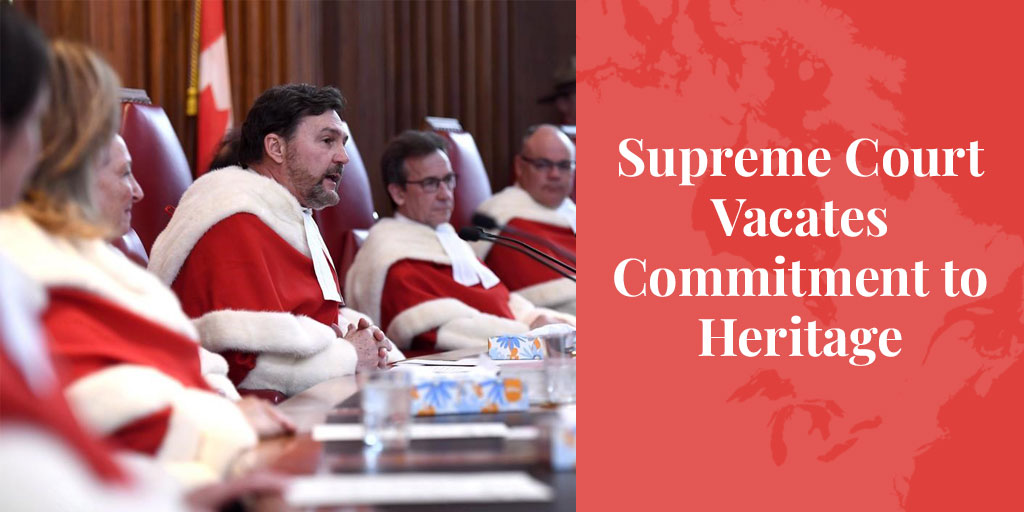
Last week, the Supreme Court of Canada held a ceremonial opening of the Court, which featured the public debut of the Court’s new robes. In June, Chief Justice Richard Wagner went on record saying that new robes were coming that “better reflect Canadian identity”.
The new robes are black with red piping, while the traditional robes were red wool with white mink fur, which had replaced the ermine of the original robes from 1875. The connection between Canadian history and identity and fur is well-known to all Canadians – the Hudson's Bay Company, voyageurs, Indigenous fur trappers, and so much more. Canada is also the birthplace of successful mink and fox farming.
SEE ALSO: A personal voyage to the origins of fox farming. Truth About Fur, 2015.
Every corner of our country has been affected in some way by the fur trade. St. John’s, Newfoundland & Labrador, where steamships unloaded sealskins, and the Fur District of Montreal, where the sound of sewing machines once echoed through the streets, are just two examples that come to mind. Today, there are countless towns and villages across Western and Northern Canada that still bear the name “Fort” or “Factory” stemming from outposts of the North West Company or Hudson Bay Company.

Fur is not some kind of historical artifact. Today, there are innovative and exciting designers across Canada using it. Some are inspired to use fur because it is a biodegradable alternative to synthetic fibres that send microplastics into our rivers and oceans. Others are using fur as a way to reconnect to their Indigenous heritage, which was suppressed by government institutions, including the very Court Wagner sits on. Others wear it because it is warm, fashionable, and accessible.
The Supreme Court has added itself to a list of Canadian institutions that have chosen to wrap themselves in the adulation of foreign-funded animal activists instead of supporting Canada’s fur farmers, trappers and seal hunters who not only support our rural communities but, more often than not, are wholeheartedly supported by everyday Canadians in rural, coastal, northern, and yes, even urban communities.

Earlier this year, Fairmont, whose hotels were built along the Canadian Pacific rail line which transported furs to auction houses across the country and whose luxury hotels were filled for decades with customers wearing their finest furs, went fur-free. The Hudson's Bay Company, which once gathered furs from across the Canadian hinterland to send to markets in Europe, had announced a fur-free policy not long before their demise. When Canadians tune in to watch our greatest athletes enter the Olympic opening ceremonies in Milan next February, they will see other countries’ athletes wearing Canadian fur, but not Team Canada.
SEE ALSO: Sharon Firth wants fur back on Canada's Olympic uniform. Truth About Fur, 2019.
Chief Justice Wagner, on behalf of Canada’s thousands of trappers, seal hunters and fur farmers, as well as the many Canadians who believe in maintaining a connection to our shared history and the role of both the Supreme Court and the fur trade in it, I encourage you to reconsider and refashion your statement. If you are convinced we need to replace the Supreme Court’s traditional Santa Claus robes with something more fashion-forward, there are many designers across Canada who would be more than happy to help you create a design that truly celebrates Canadian identity and heritage – with natural and sustainable Canadian fur.
Doug Chiasson is Executive Director of the Fur Institute of Canada, and a Director-At-Large of the Canada Mink Breeders Association.
On February 6, the Fur Institute of Canada returned to Ottawa for Fur Day on the Hill 2024. Supporting us…
Read More
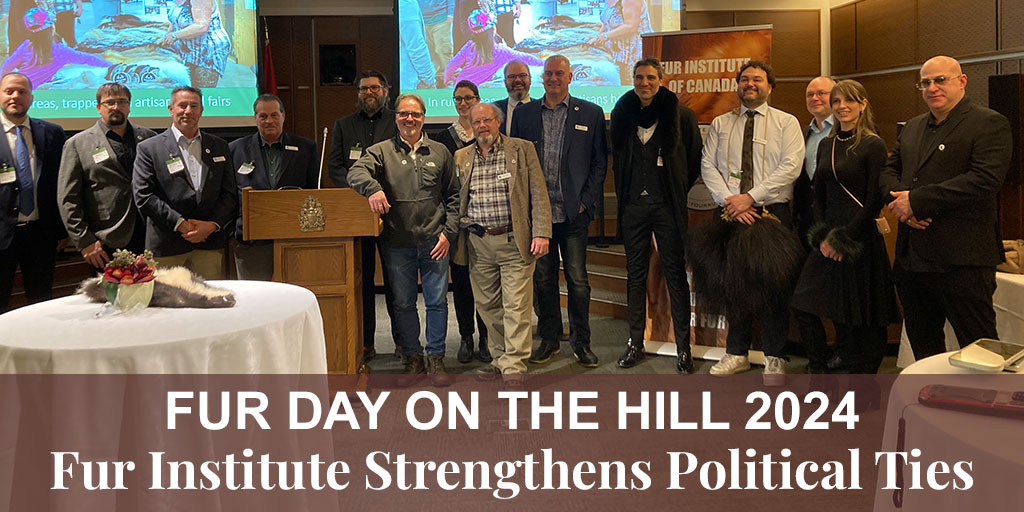
On February 6, the Fur Institute of Canada returned to Ottawa for Fur Day on the Hill 2024. Supporting us were our friends at Summa Strategies, and joining us were our colleagues from the Ontario Fur Managers Federation, Canada Mink Breeders Association and Saga Furs.
FIC Board members had approximately 30 meetings with Members of Parliament, Senators, representatives of the Prime Minister’s Office and Ministers. Topics covered ranged from re-establishing Canada as a fur leader, supporting Canada’s sustainable and humane seal harvest, and defending the use and trade of fur around the world. Targeted support to promote Canadian fur at home and abroad, continuing the Canadian Seal Products campaign, and a strategy to work collaboratively between the diplomatic corps and the FIC to combat disinformation and trade bans on fur, are all initiatives that the Institute team discussed with decision-makers.
We also hosted Parliamentarians and allies from the nation’s capital for a cocktail reception, where they were able to experience fur garments from Créations GAMA in Montreal and Ottawa’s own Pat Flesher Furs. The chilly February Ottawa weather gave a great opportunity for FIC members to wear their own furs, and for MPs to bring theirs as well.
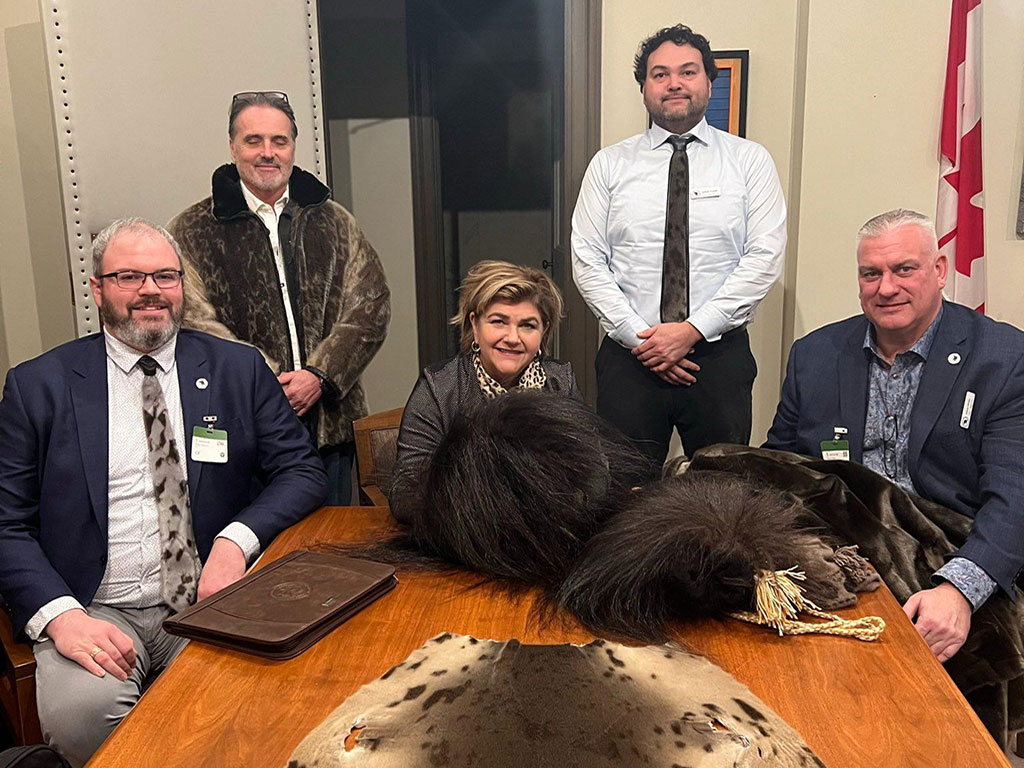

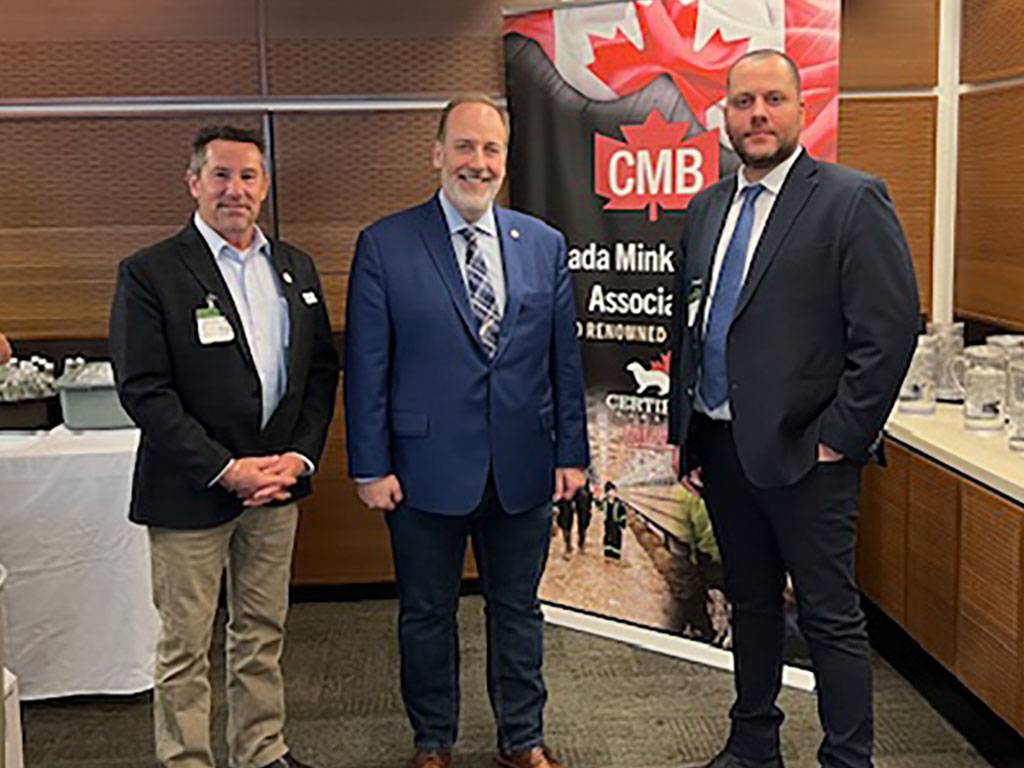
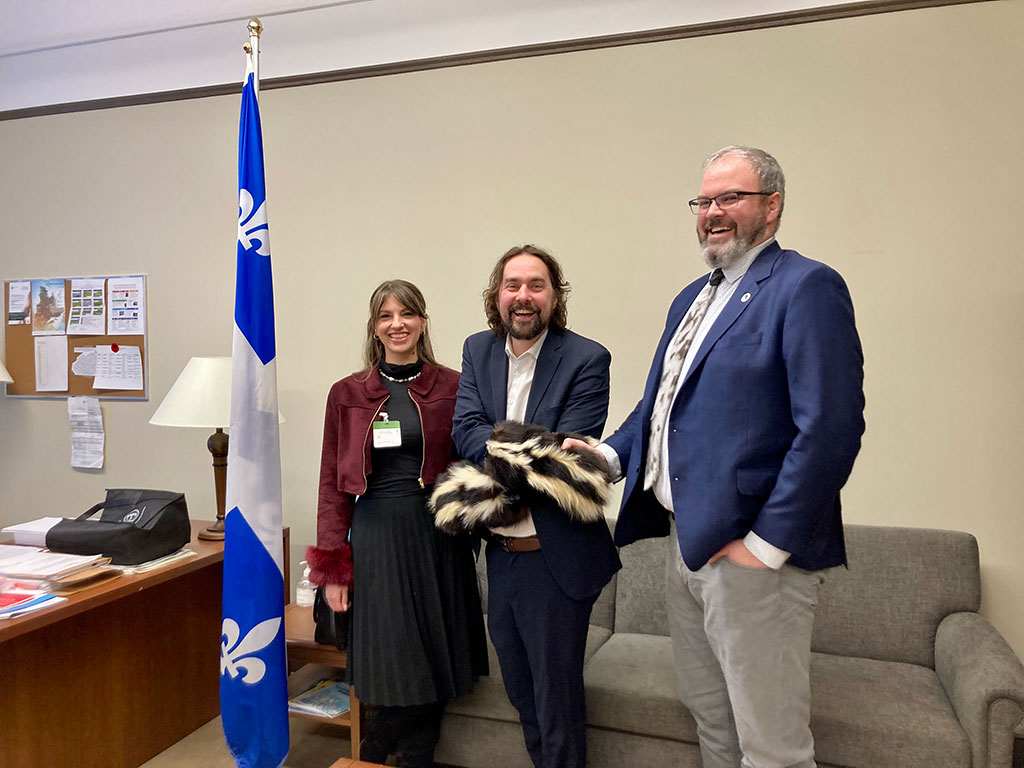
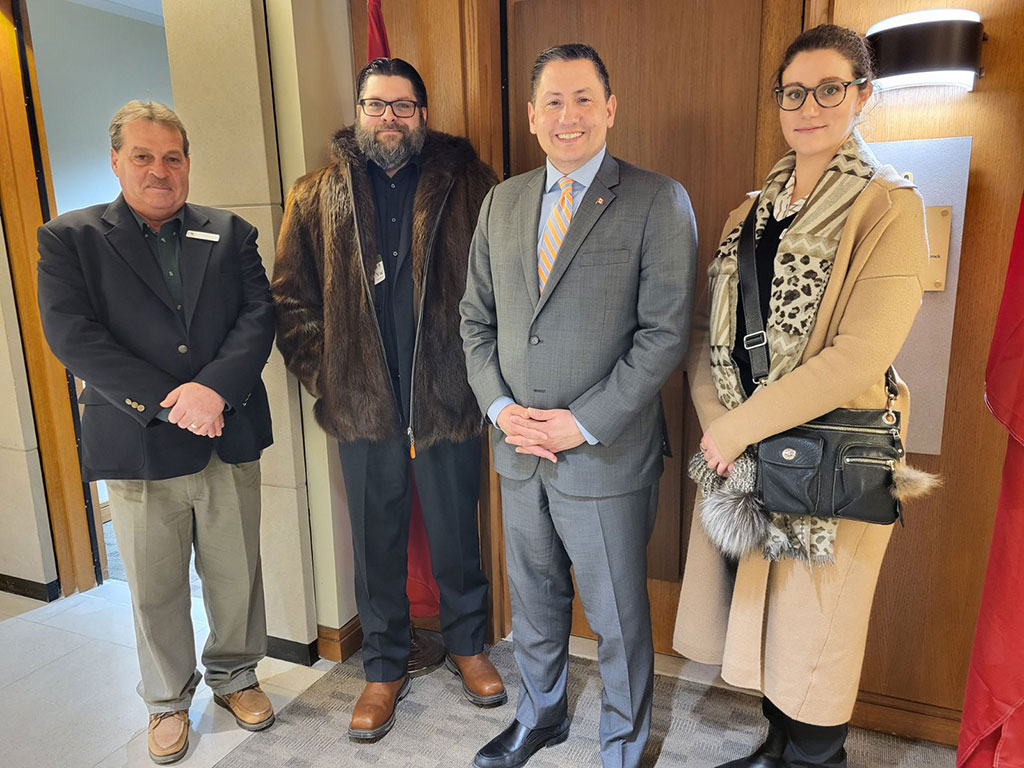
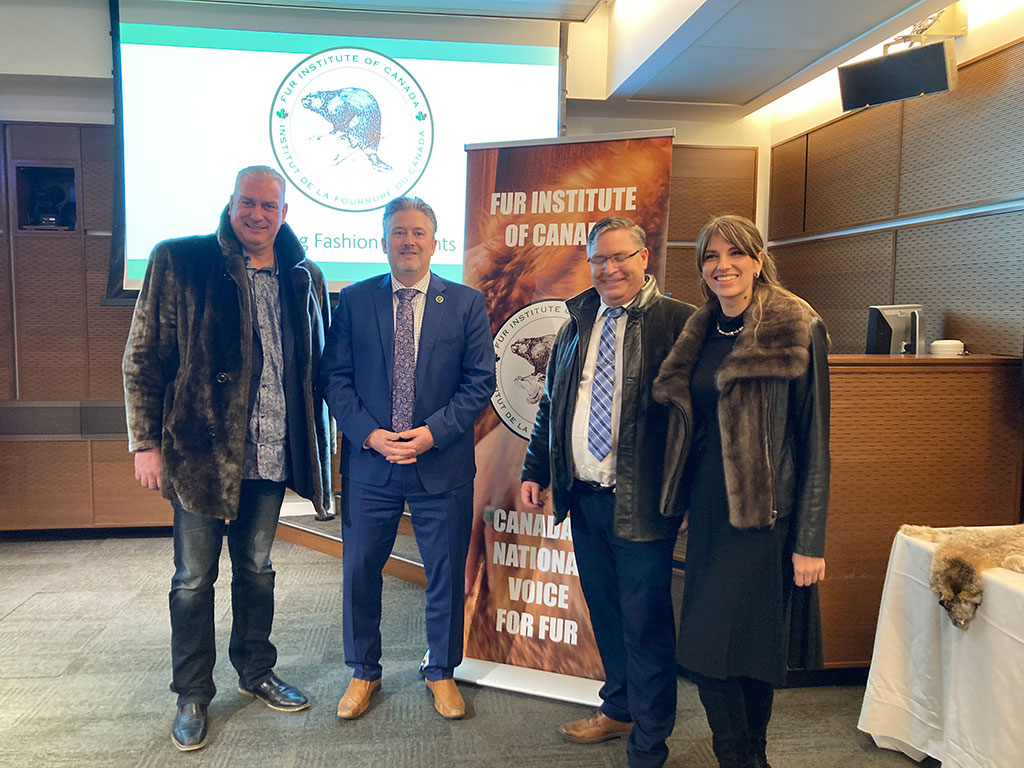

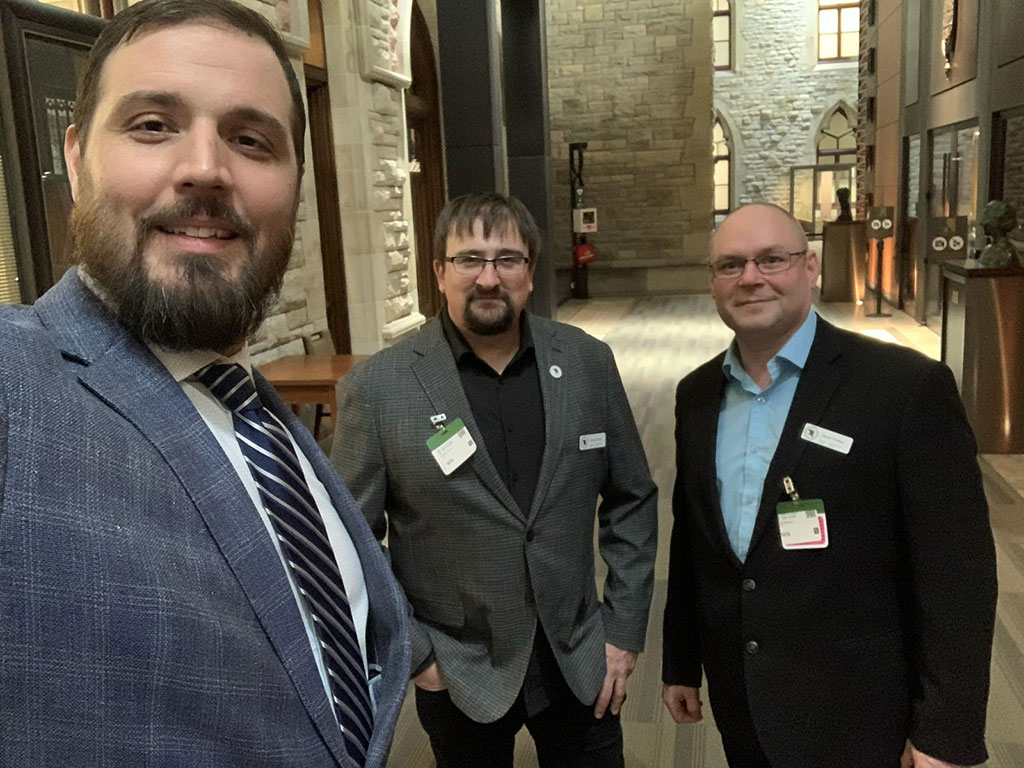
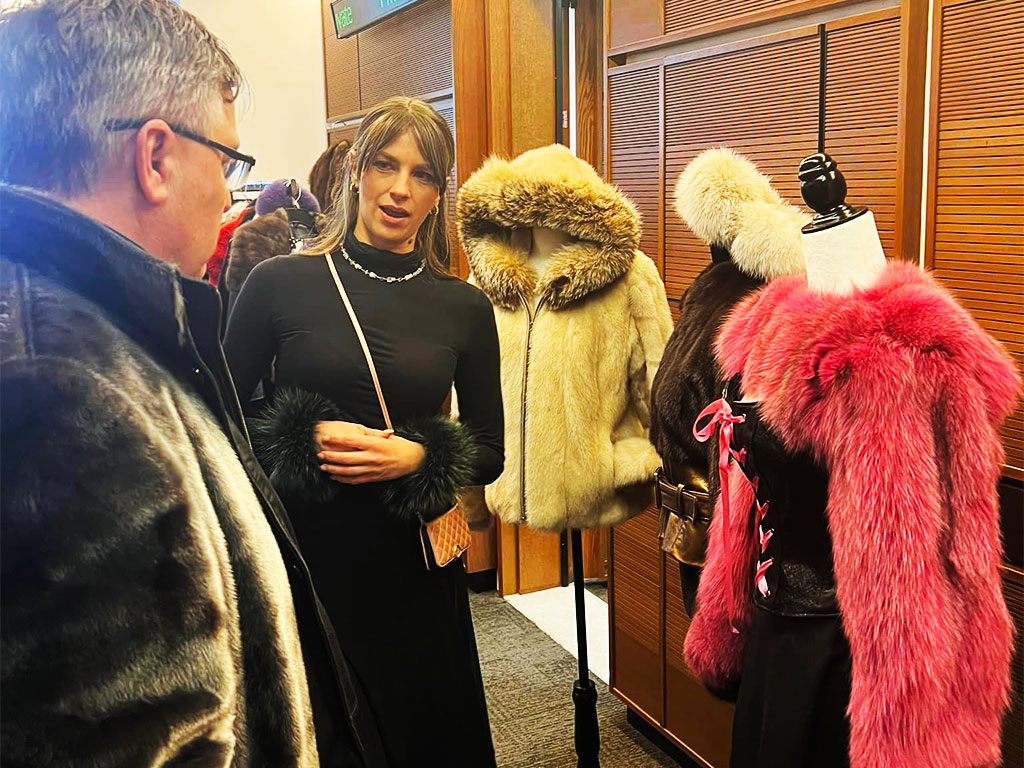
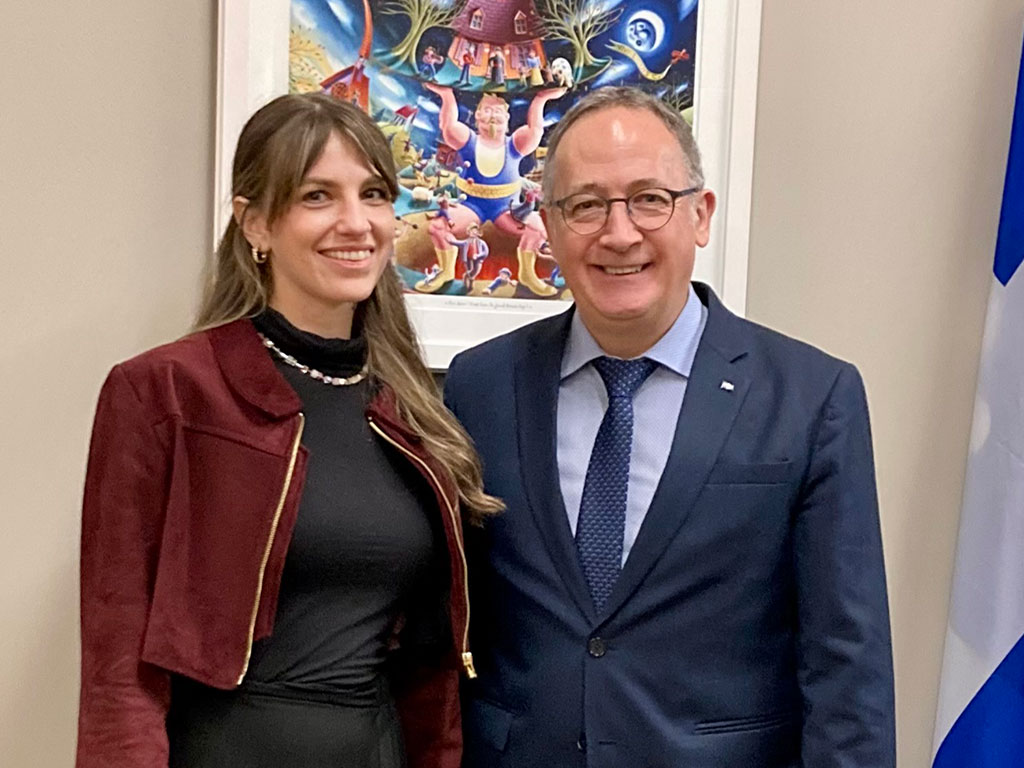
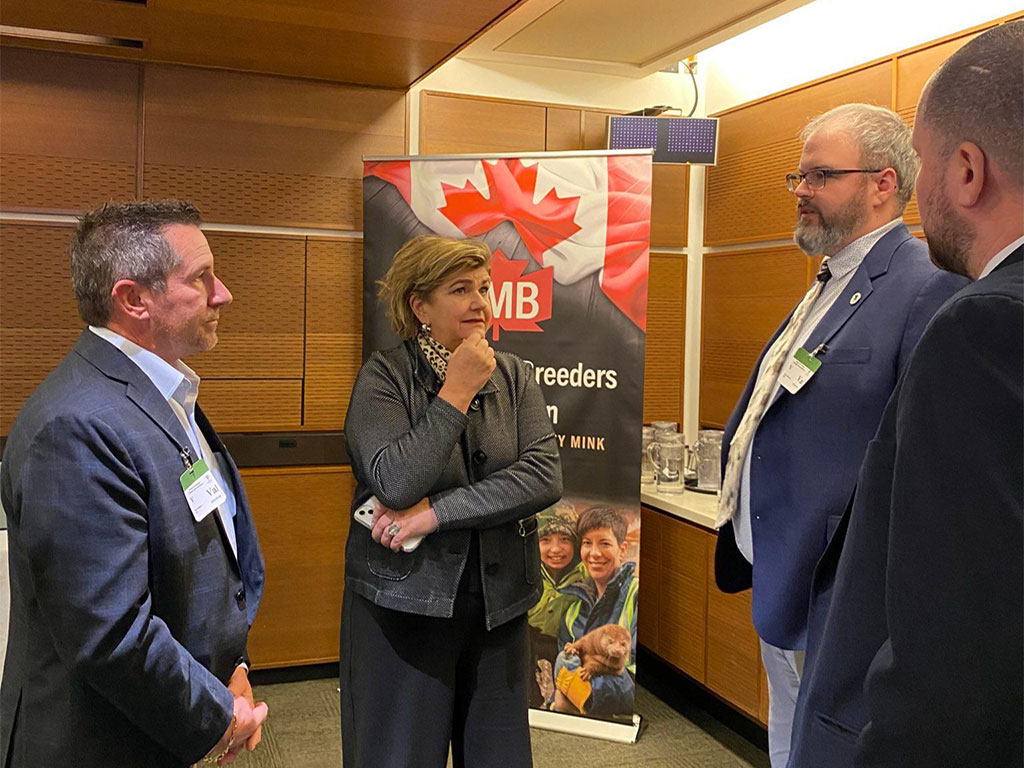
Building strong relationships with Parliamentarians and government decision-makers is an essential part of FIC’s mandate to advocate on behalf of Canada’s fur trade. By re-establishing Fur Day on the Hill as an important part of the Ottawa calendar, the Institute is gaining allies of all political stripes, and making sure that more of the people who make decisions that affect our industry are familiar with our organization and our trade.
The FIC staff and Board will continue to engage with governments at the federal, provincial and territorial levels to support and defend Canada’s fur trade throughout the year.
SEE ALSO: Fur Day on the Hill: Fur Institute welcomes friends in Ottawa. Truth About Fur, May 1, 2023.
On Nov. 23-24, all the right people – leaders from the European Union and Canada – were gathered in St….
Read More
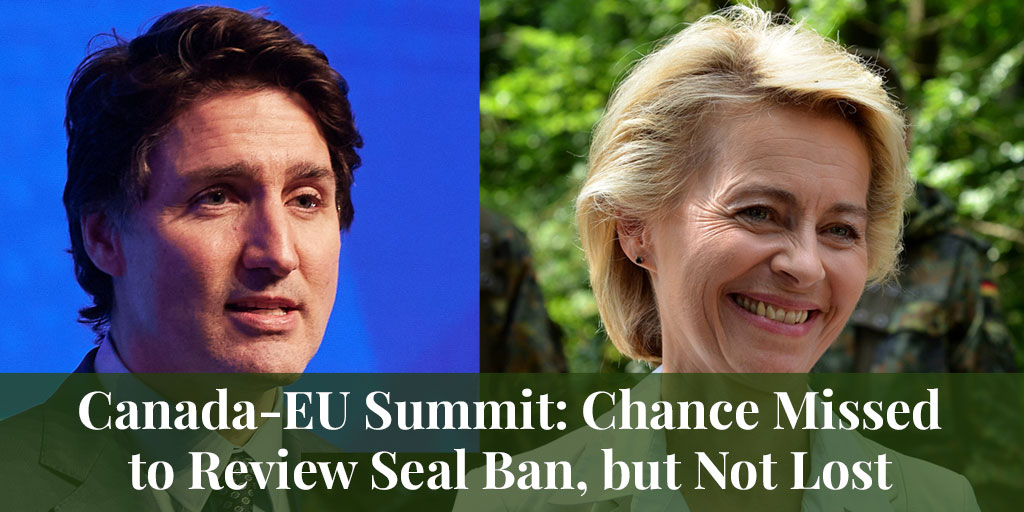
On Nov. 23-24, all the right people – leaders from the European Union and Canada – were gathered in St. John’s for the Canada-EU Summit. Those of us representing Canadians who make their livings in remote and rural areas from Prince Rupert to Newfoundland’s outports, by harvesting fur and seals, were hopeful. Meetings such as these provide high-level government representatives with an opportunity to discuss issues that matter to their respective governments behind closed doors and far removed from everyday citizens.
And, this summit was different. Instead of being monitored only by political gadflies and lobbyists, people in remote communities across Eastern and Northern Canada watched closely. They watched because the summit was held in Newfoundland, where the ocean and its bounties have long been the bedrock of the economy and culture.
This, of course, is the same St. John’s that once was home port to steamers, which brought hundreds of Newfoundlanders to the ice of the North Atlantic to harvest seals. The same St. John’s where European celebrities descended to hold press conferences in front of TV cameras to attack the livelihoods of hunters who put their lives on the line on the ice to provide for their families. The same St. John’s where, for over 30 years, the elected officials of the provincial government sat on sealskin chairs as they debated the business of the day.
In 2009, the predecessors of those same EU officials who were fêted in St. John’s banned the trade of Canadian seal products, striking a blow to rural communities across Eastern and Northern Canada that had relied on the hunting of seals for hundreds of years. Regulation No 1007/2009 inflicted untold damage not only to communities in Newfoundland and Labrador and Quebec, but also to Inuit communities across Canada’s North.
The impact on Inuit communities was the genesis of a challenge to the ban in the European Court of Justice, brought by Inuit Tapiriit Kanatami and supported by the Fur Institute of Canada and others. This was followed by a challenge by the Government of Canada at the World Trade Organization. Though it upheld the ban, the WTO challenge forced the EU to allow an exemption for seals harvested by “Inuit and other Indigenous communities”.
This is the exemption that European Commission President Ursula von der Leyen said was “working well” and that a “good balance” had been found on seals. This is completely and unambiguously false. Only two bodies in Canada are recognized as being able to certify that a seal product comes from an Indigenous harvest: the Government of Nunavut and the Government of Northwest Territories. In a report from her own Commission, it shows that Nunavut has only exported two sealskins to Europe, in 2020, and the Northwest Territories exported just two sealskin coats, in 2022.
Perhaps even more revealingly, that same report contains four EU member states saying that the ban’s “impact has gone beyond its intended purpose”. These four states – Estonia, Latvia, Finland and Sweden – all still have their own seal hunts but are hamstrung the same way Canadian sealers are when it comes to trading their products.
In terms which would be shockingly familiar to anyone on Canada’s East Coast, these states raise concerns about the impacts of seals eating cod and salmon, about infecting fish with parasites, and impacts on commercial and recreational fisheries.
Unfortunately, EU and Canadian officials did not avail themselves of an ideal opportunity to reverse the historic injustice of the 2009 seal ban when they gathered in St. John’s.
But it’s not too late. The European Commission is launching a review of the Regulation on Trade in Seal Products in 2024. Canada can, should, and must work closely with the EU member states that are unhappy with the ban, supported by Canada’s sealing industry and Indigenous leadership, to overturn the regulation.
We also need European Commission leadership to engage honestly and candidly on the damage done by this ban and chart a course to move beyond the mistakes of the past. This conversation must be elevated to the most senior levels and involve representatives of the industry and Indigenous communities directly impacted, not the extremist animal-activist groups whose goal is to destroy the way of life of people who live close to the land – and sea – and who use renewable natural resources responsibly and sustainably..
It’s been five long years since a team from the Fur Institute of Canada last descended on Parliament Hill, thanks…
Read More
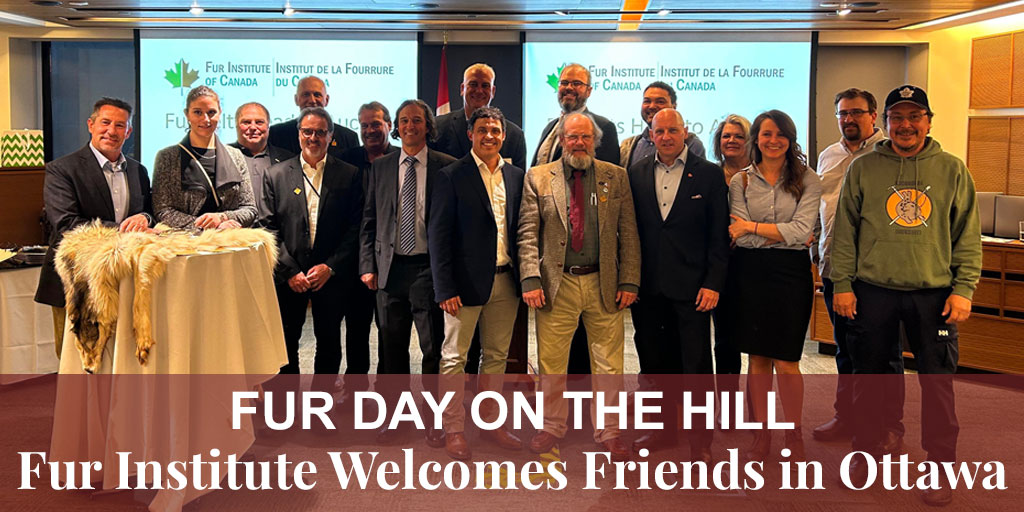
It's been five long years since a team from the Fur Institute of Canada last descended on Parliament Hill, thanks in part to travel restrictions during the Covid-19 pandemic. So, the revival of Fur Day on the Hill this April 18 is a cause for celebration! It's also to be hoped that Fur Day becomes an annual event that Members of Parliament, Senators and other senior government officials can mark in their diaries with confidence.
Our delegation this year was impressive, not just in numbers but also in the breadth and depth of knowledge we represented. Leading our group was current FIC Chairman Jason White, supported by Board members Mike O’Brien, Emmanuel Dalpé-Charron, Corey Grover, Nathan Kogiak, Francois Rossouw, Scott Sears, Robin Horwath, Rob Bollert and Brian Dicks.
Also joining us were Seals & Sealing Network Program Manager, Romy Vaugeois, the Ontario Fur Managers Federation General Manager, Lauren Tonelli, as well as Matt Moses of the Canada Mink Breeders Association. Ably supporting us at Fur Day headquarters was a team from Summa Strategies.
SEE ALSO: Doug Chiasson: What does the Fur Institute's new ED bring to the table? Truth About Fur, June 22, 2022.

The FIC has always had a strong and important relationship with government, going back to our establishment by Wildlife Ministers in 1983. For the last forty years, we have engaged closely with federal, provincial and territorial governments, particularly in fulfilling our mandate to test and certify trap compliance with the Agreement on International Humane Trapping Standards.
But good relationships must be nurtured, and after a five-year absence from Parliament Hill, our reappearance was long overdue. Of course, we wanted to connect with old friends we hadn't seen in a while, but more importantly, we needed to meet a new cadre of MPs and Senators, and identify new champions for Canada’s sustainable, humane fur trade.
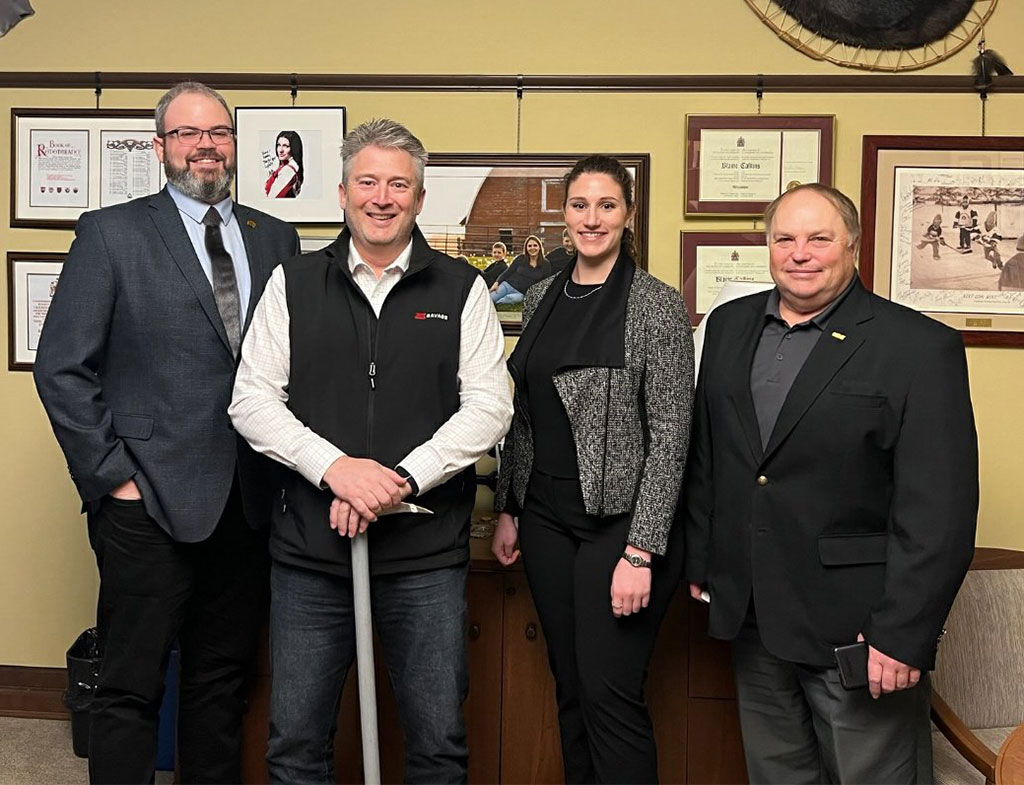
Many of these Parliamentarians, and especially those from rural and remote areas, represent communities where trapping plays a vital role in the local economy. So it was important for us to touch base with representatives from across the country, from the West, East and Arctic coasts and many points in between. It was also refreshing to be reminded that Canada’s fur trade is not a partisan issue, with strong support to be found in all the major political parties.
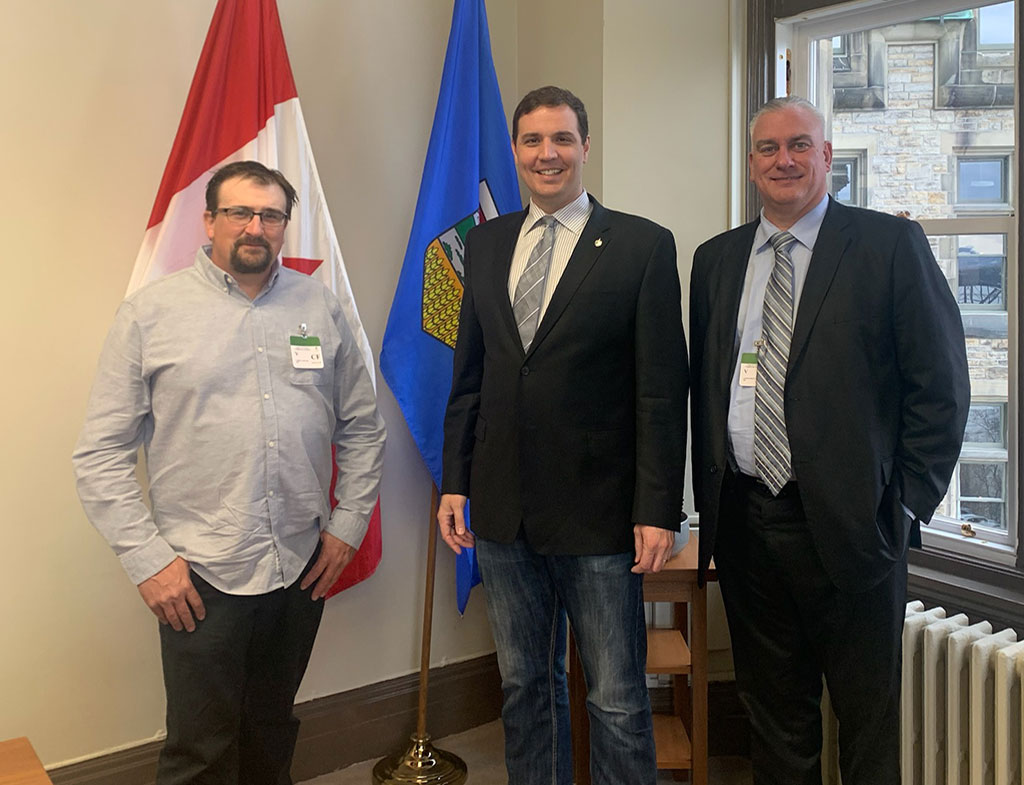
There is always room for improvement in the way federal government regulates businesses, and this was the thrust of our unified message on Fur Day.
Under the current arrangement, a long list of departments and agencies are involved in regulating different aspects of the fur trade. These include Environment and Climate Change Canada, Crown-Indigenous Relations and Northern Affairs Canada, Global Affairs Canada, Industry Science and Economic Development Canada, Fisheries & Oceans Canada, Agriculture and Agri-Food Canada, Export Development Canada, and the seven federal Regional Development Agencies.
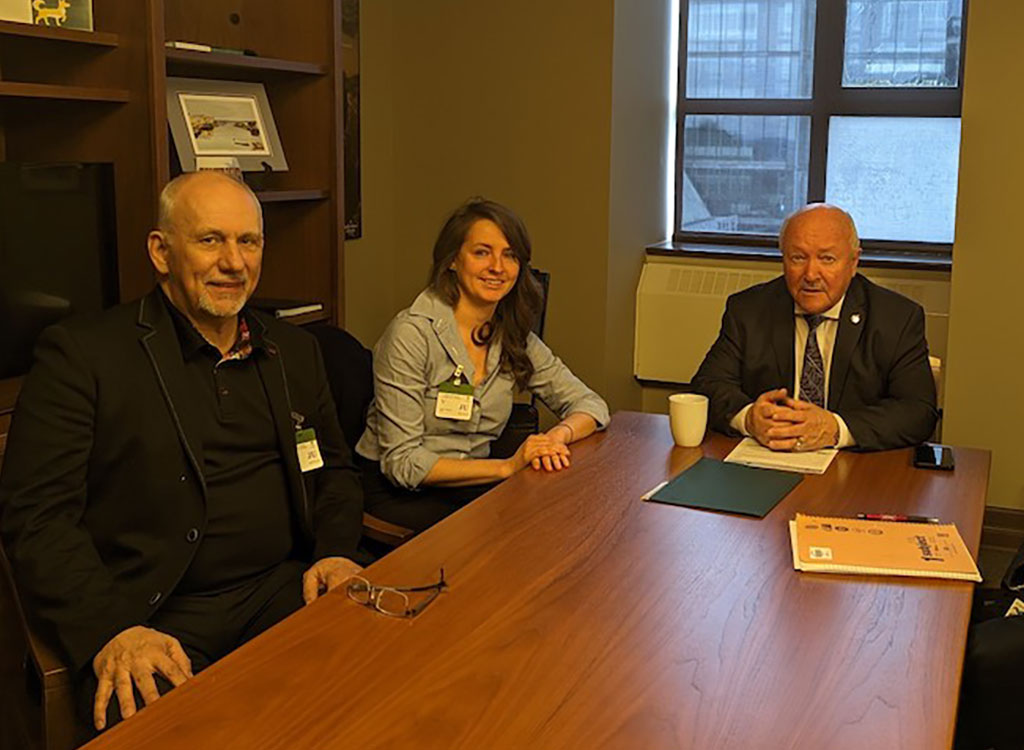
All these departments and agencies play their own role in determining what form the fur trade takes, and the result is often misalignment and confusion. For example, if a fur business wants to know what federal support exists for them, and how to access it, they can get lost in a bureaucratic maze.
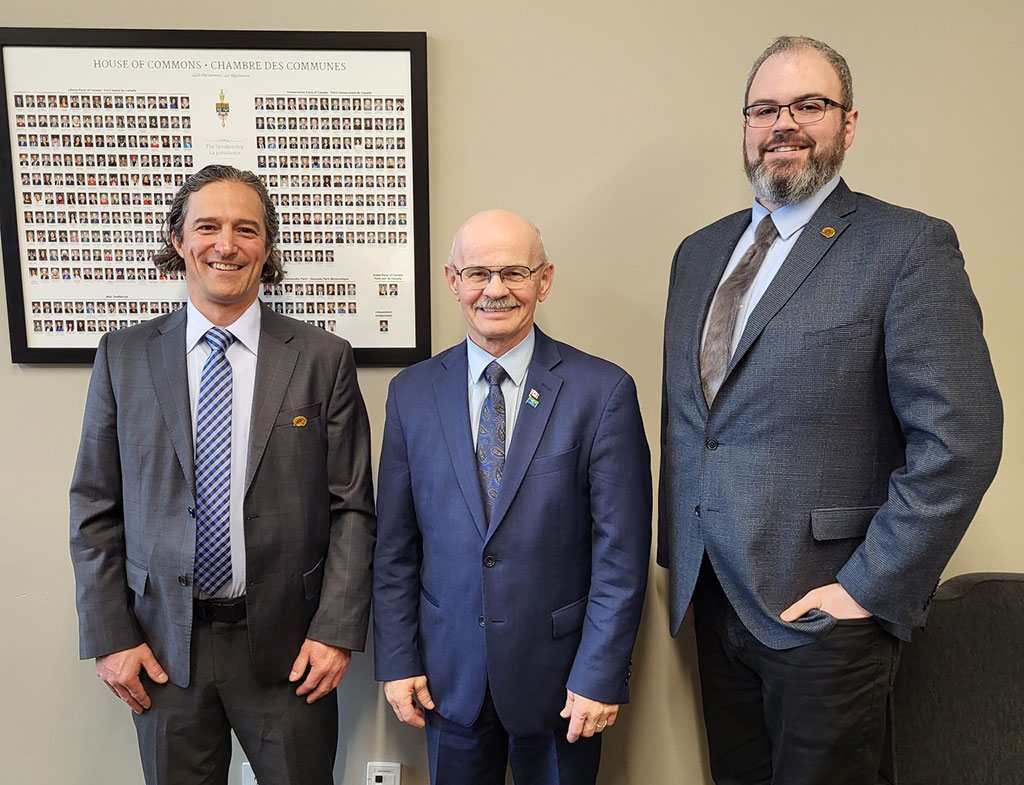
Given that the fur sector was, until quite recently, worth more than $1 billion to the Canadian economy, it is unsurprising that we enjoy strong support among politicians at all levels of government. But what is surprising is that there is no one department within the federal government dedicated to providing a home base for the entire fur trade, and acting as our Champion.
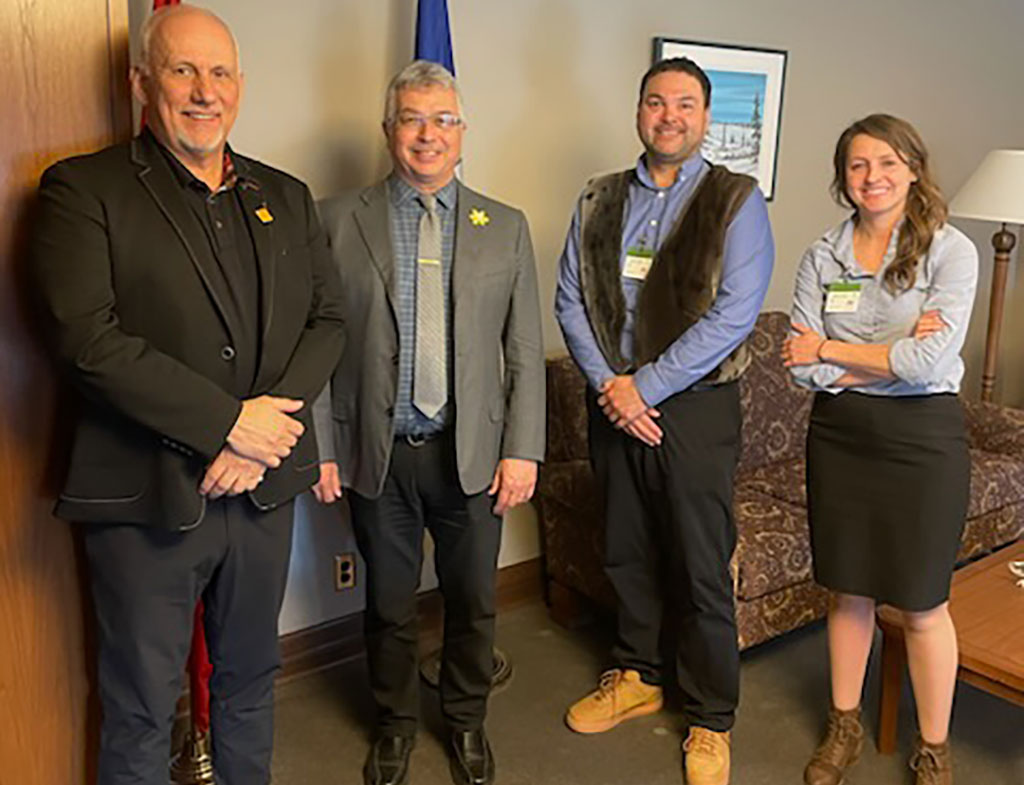
Such a department would advocate for the fur trade at internal government talks, and just as importantly, point folks in the trade towards the right decision-makers and appropriate pots of funding to support new initiatives for fur.
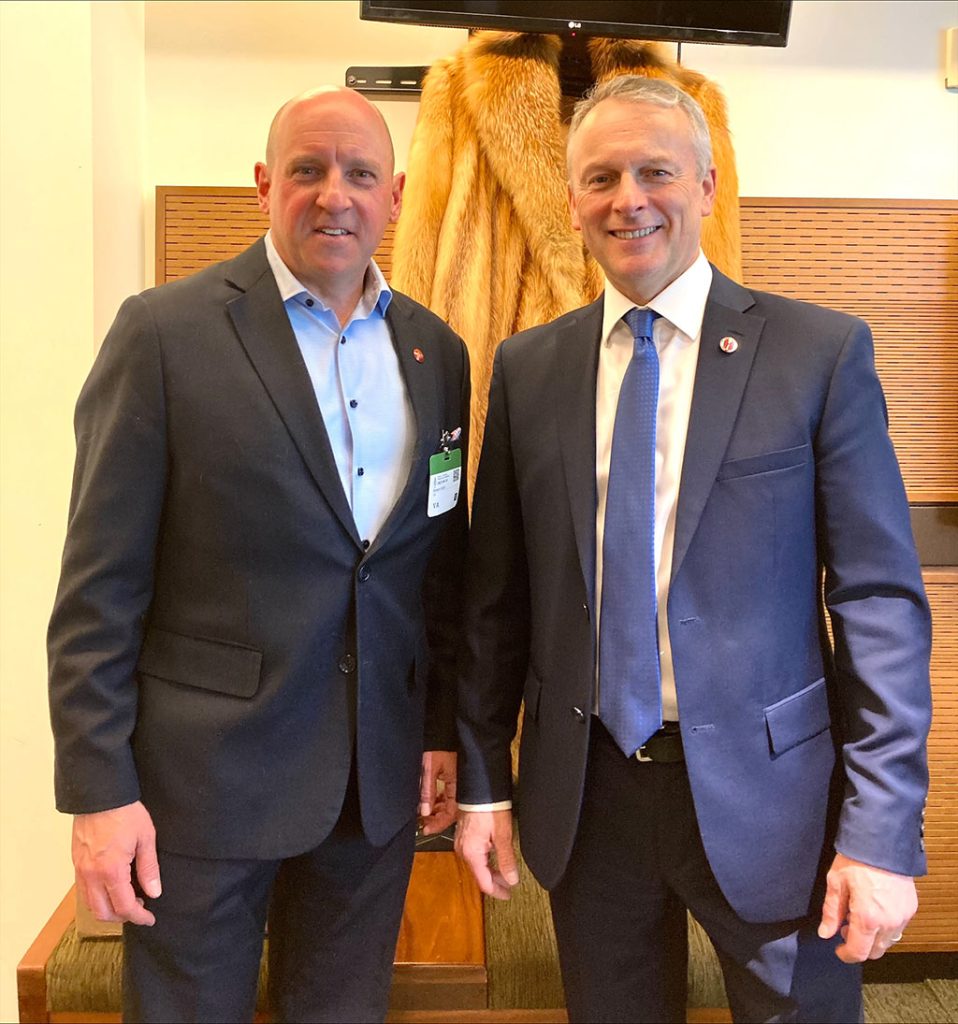
After a long day with many meetings, we held a reception for Parliamentarians and friends of fur from Ottawa and the surrounding area. But this wasn't just a chance to wind down and relax.
Rather, it was an important opportunity to let Parliamentarians meet others from the fur trade, while also giving them a chance to appreciate the unique feel and beauty of natural fur.
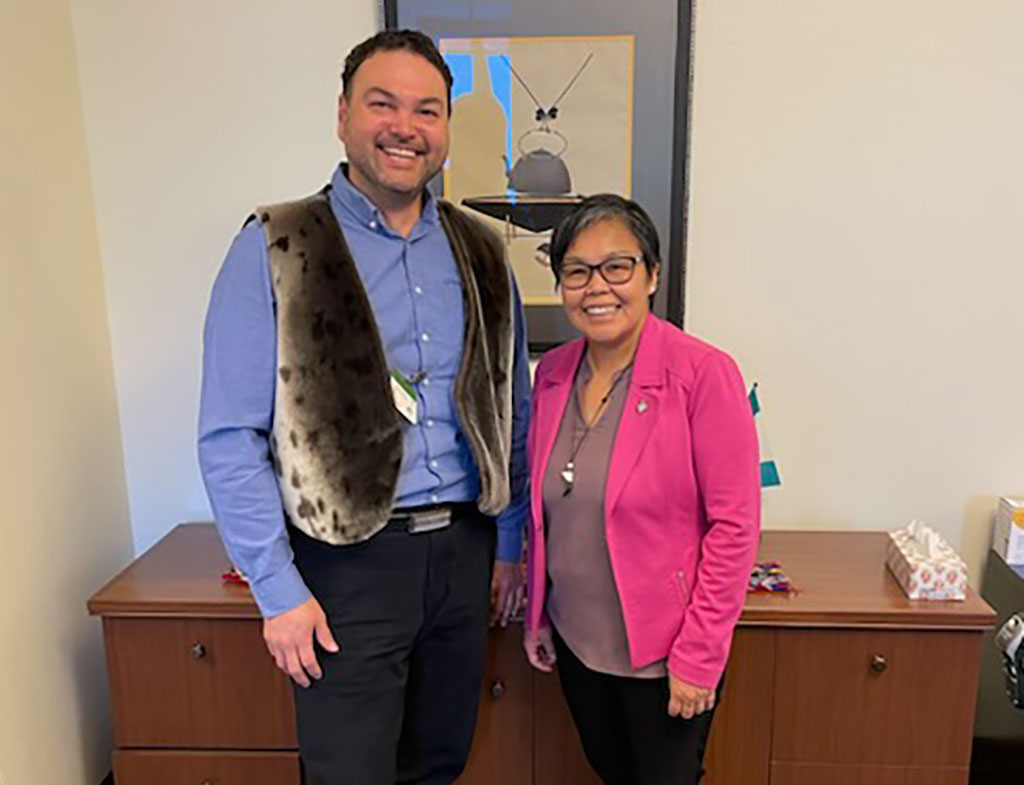
To this end, our reception featured a display of fur garments, home décor, and pelts. Most of the garments and décor were provided courtesy of Rob Cahill of Cahill's Furs in Peterborough, from his Further Upcycled line. And FIC Board member Robin Horwath, who was also formerly General Manager of the Ontario Fur Managers Federation, showed dressed pelts of the various furbearers harvested across his province.
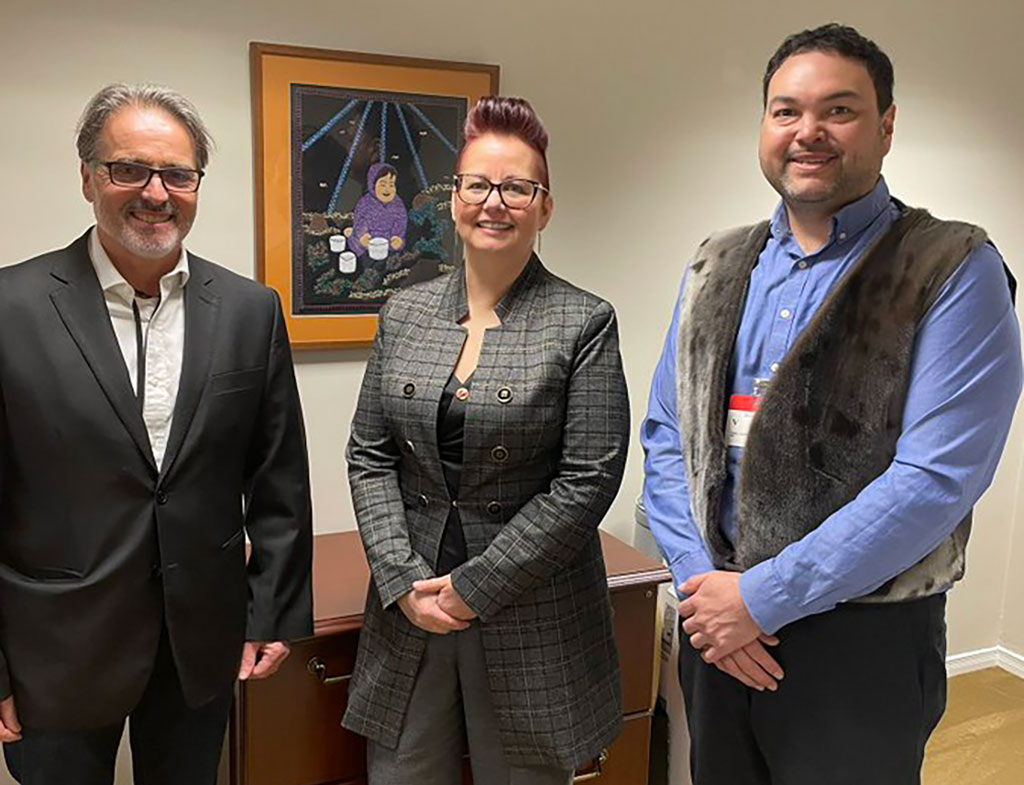
Fur Day on the Hill has just taken place for the first time in five years, and that's far too long. It was always intended to be an essential part of the FIC's lobbying efforts on Parliament Hill, on behalf of the entire fur sector.

For this reason, it is my hope that Fur Day becomes an annual event, as we strive to bring the full power of the federal government behind the fur sector, where it belongs.
Considering how much trapping of wildlife takes place in Canada, it is very rare for pet dogs to become accidental…
Read More
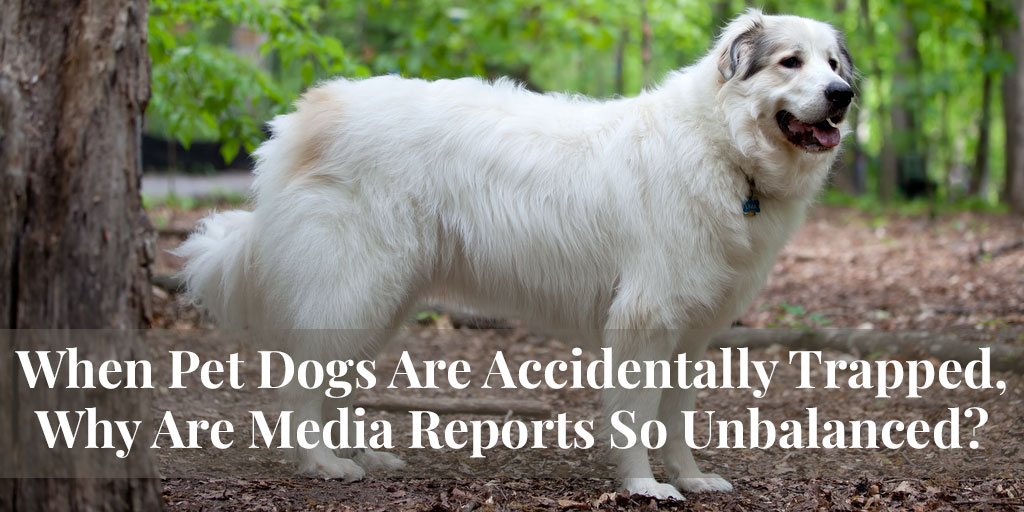
Considering how much trapping of wildlife takes place in Canada, it is very rare for pet dogs to become accidental victims. Finding a dog in their trap or snare is not something any trapper wants, but accidents do happen, and they almost always involve someone breaking the law. Maybe a trap was illegally set, or maybe a dog was off-leash where it shouldn't have been. Yet when the media report these stories, they hardly ever investigate the crime that's been committed. Instead they turn the story into an indictment of all trapping, including by licensed, law-abiding trappers.
Why is this imbalance occurring? And what can the trapping community do to encourage more balanced and accurate reporting?
Let's start by looking at two recent stories involving traps catching the wrong animals.
Last December on Prince Edward Island, a four-year-old Pyrenean mountain dog called Caspie died in a snare while exercising with her owner, Debbie Travers. The dog was off leash, which was perfectly legal because they were on private property belonging to Travers's family. Authorities investigated and found that the snare had been set illegally by someone who had failed to get the landowner's permission. They also found and removed three other snares nearby.
Local media predictably jumped on this human interest story. Man's best friend had been killed, she had a name, a bereaved owner wanted justice, and there were photos of Caspie in happier times. The story's hook practically wrote itself.
The problem arose in the choice of people interviewed for context.
After covering the human interest angle, it should have been a straightforward crime story. There was a victim, the dog (or, legally, its human owner). And there was a perpetrator, the person who set the illegal trap.
A good reporter would address the legality of pet dogs exercising off-leash on this particular land, and explain how the story could have been different under different circumstances. He or she would also stress that the perpetrator was trespassing, and had set the snare without permission and with intent to poach. And while the dog's death was surely unintentional, she died as a direct result of these illegal acts, not due to legal trapping.
For expert comments, the reporter could then interview law enforcement, the government body regulating trapping, and the local trapping association. Between them, these sources could say exactly what laws had been broken, and make an educated guess as to why.
Instead, Canada's public broadcaster, CBC, devoted a sizeable chunk of its report to the views of an ambulance-chasing anti-trapping group. "These traps are indiscriminate, they injure both the target and non-target animals," said Aaron Hofman, a director of The Fur-Bearers. "Dogs, they have keen senses of smell, so what's gonna stop them from wandering into a trap versus, say, a coyote or fox?"
No representatives of the trapping community were interviewed.
SEE ALSO: 6 trapping safety videos dog owners should watch. Sportsman's Blog.
Our second case is different, but hopefully also instructive to reporters looking to ask the right questions.
This January, a bobcat in Calgary spent two weeks walking around a community with a small trap on its front paw. Authorities finally caught "Bobby" (as some locals called him), and took him to a wildlife rehabilitation facility, where we understand he's doing fine.
We can't be sure exactly what happened, but if reporters had bothered to ask people who actually know trapping, this is what they'd have heard.
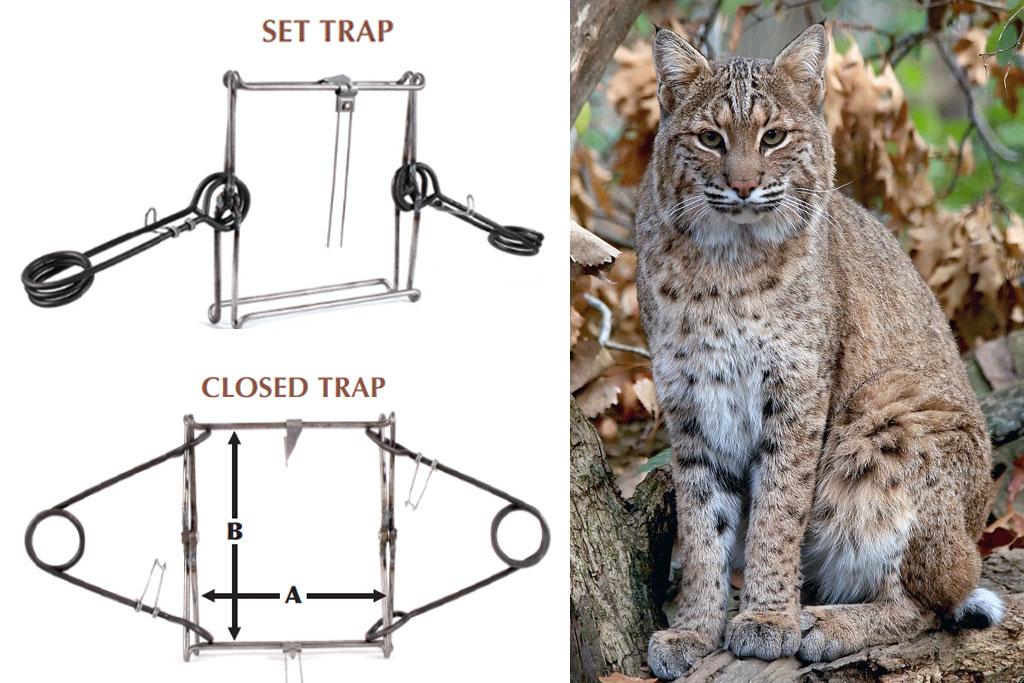
The trap was a Conibear 110, a body-gripping trap designed to instantly kill small animals that enter it head first. It was not a foothold trap, even though it held the bobcat's paw.
We can also say that the trap was almost certainly not set by a licensed commercial trapper. Such a trapper would never use a small trap like this for a bobcat, and if it were set in an open area, he would have placed it in some kind of box to keep larger animals out. He might also have tethered the trap to something like a tree, as an extra precaution against a larger animal wandering off with the trap attached.
So what almost certainly happened was that someone with no trapping experience set the trap to deal with a small animal, and did it wrong. Maybe they were after a rat, or thought it would stop the neighbour's cat pooping in their flower bed.
Unfortunately, once again the CBC reporter did not interview any trapping experts, instead featuring a wildlife rehabilitation expert who said: “the device clamped on the animal's paw was a conibear trap, which is typically used to ensnare skunks, raccoons or foxes.” As trappers reading this know, 110s are only AIHTS-certified for muskrat and weasels, not raccoons or skunks, and it would be too small for fox. This is likely not intentional misinformation, but simply an over-simplification from a non-expert on trapping. A trapper would have been able to tell the reporter that Conibear-style traps come in a wide range of sizes and strengths, and that no trapper worth his salt would set a 110 for a bobcat.
We all want to be fully informed on subjects that matter to us, and seek out media that produce balanced and accurate reporting. But as these examples show, that's not always easy.
To understand why, consider the life of a local news reporter. In this fast-paced world, deadlines are getting ever shorter, plus most local stories have short shelf lives anyway. If a cat gets stuck up a tree, it either makes the evening news or it's forgotten. So reporters bang out their 800 words as fast as they can, and just hope they got the facts as straight as they could.
Anti-trapping groups pander to this weakness. Even though they don't know how to trap, and have no experience in improving trapping technologies, practices, or regulations, they have made themselves go-to sources for comment whenever trapping makes the news. They make themselves very accessible, and have sound bytes and images ready to go.
They're sneaky too. On their websites they're clear about wanting to ban all trapping, but for the media, they take a soft-sell approach to make them sound reasonable. Regulations should be tightened, they say. More safeguards are needed. They may even act like they have a great new idea, though in truth every option to make trapping safer has already been considered somewhere in the country.
And the result, almost always, is a news report that is a one-sided indictment of all trapping, including the legal activities of licensed commercial trappers. We all get tarred with the same brush.
So if we hope to see balanced, objective reports about trapping, we need to be playing this game too. We are the authorities, not them, and we need to make sure reporters know this. But even more important, we need to be accessible, and that's the tricky part.
We can't match the accessibility of anti-trapping groups because we simply don't have the manpower to flood reporters' email or voice mail. Plus we have other work to do – be it actual trapping, or unrelated jobs that most trappers have. In contrast, all anti-trapping groups have to do is make noise.
So we need to work smarter, and to that end I offer these suggestions:
• We must be proactive. Trapping associations must make sure their local reporters know they exist before a story breaks. Call them up, build a rapport, and let them know you are available for comment at any time. Invite them to your events, show them that trapping is alive and well, let them know what your organizations are up to.
• When a story does break and a reporter contacts you for comment, you need to respond as quickly as possible. This may mean establishing a rota at your association so one person is always available. The last thing a reporter with a deadline wants to hear is an automated reply like, "I'm out of the office for the next three days."
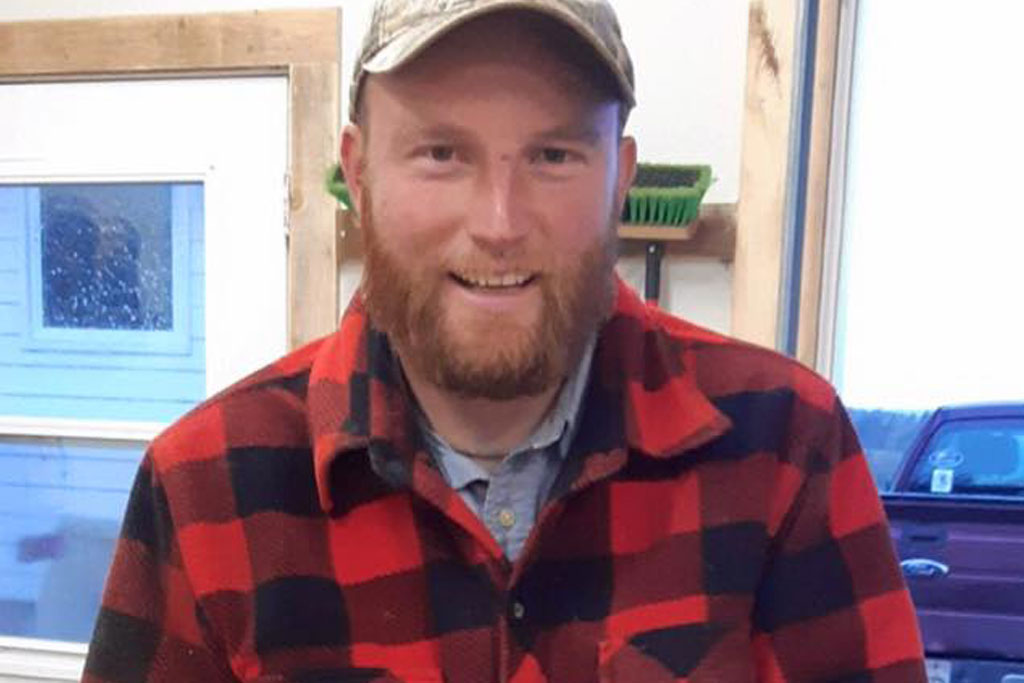
• If you see a news report that is negative about trapping and does not include a trapper's perspective, contact the reporter or editor and point out the omission. And, of course, suggest someone they can contact in future. As proof that this approach works, FIC reached out to CBC following its unbalanced report on the PEI incident, and two days later it published a new report which gave top billing to the views of an actual trapper.
• On the other hand, when you see a news report that is positive about trapping, and includes a trapper’s perspective: like, comment, share! Even contact the reporter and let them know that you noticed they provided balanced coverage. If reporters see that stories they write that feature trappers telling the truth about trapping get better feedback than the stories with the anti-trappers, they will be more likely to feature trappers again.
With luck, the next time a dog is caught in a trap, the trapping community will be treated fairly by reporters. And hopefully there will be fewer nasty quotes from anti-trapping groups that don't know what they're talking about.
When it comes to environmental treaties, nothing grabs news headlines these days like those addressing climate change, but there are…
Read More

When it comes to environmental treaties, nothing grabs news headlines these days like those addressing climate change, but there are other multilateral treaties that also demand our attention, not least the Convention on Biological Diversity. Since entering into force in 1993, the CBD's Parties (now numbering 196) have striven to develop strategies for the conservation and sustainable use of biodiversity, and today the treaty is seen by many as the key document regarding sustainable development.
So it is heartening for Canada's trappers and sealers that the recently concluded 15th Conference of the Parties (COP15) ratified a strategic plan that emphasizes its commitment to the sustainable use of wildlife as a means of arresting biodiversity loss, while stressing the important role to be played by Indigenous and local communities. Indeed, important parts of the Kunming-Montreal Global Biodiversity Framework align closely with the core values advocated by the Fur Institute of Canada and its members.
The Framework is named in part after the Chinese city of Kunming, where COP15 was scheduled to be held in 2020. But the meeting was postponed repeatedly due to Covid-19, and was finally split into two sessions. The first, mostly an online event, took place in October 2021, and saw delegates agree provisionally to draft Global Targets in line with the theme "Ecological Civilization: Building a Shared Future for All Life on Earth". These Targets, to be met by 2030, are intended as stepping stones on the way to achieving Global Goals by 2050.
The second session, held last December 7-19 in Montreal, saw further discussion of the Targets, and finally the adoption – after more than four years of negotiations – of the Framework.
SEE ALSO: Official CBD press release, December 19, 2022.
On behalf of the FIC, I attended the meeting in Montreal as a Non-Governmental Organization observer to advocate for the important role of sustainable use of wildlife in biodiversity conservation. Of the 23 Targets identified for urgent action, we should be particularly pleased with the language of three, numbered 5, 9 and 16 (see below).
Targets 5 and 9 are particularly noteworthy for Canada's sealers and trappers because they explicitly endorse the sustainable use of wildlife as an essential component in conserving biodiversity.
"Ensure that the use, harvesting and trade of wild species is sustainable, safe and legal," begins Target 5. It also makes specific reference to "respecting and protecting customary sustainable use by indigenous peoples and local communities."
Target 9 then underscores the importance of "providing social, economic and environmental benefits for people, especially those in vulnerable situations and those most dependent on biodiversity," and "protecting and encouraging customary sustainable use by indigenous peoples and local communities."
Both Targets 5 and 9, therefore, are in perfect alignment with the conservation ethic of Canada’s fur harvesters.
Canada’s trappers, sealers and furriers can also play a key role in helping to achieve Target 16, which calls on Parties to "Ensure that people are encouraged and enabled to make sustainable consumption choices including by establishing supportive policy, legislative or regulatory frameworks, improving education and access to relevant and accurate information and alternatives, ..."
Everyone in the fur trade must help consumers to make these sustainable consumption choices, in particular by educating them about the environmental benefits of natural fur over fast fashion that relies on synthetics.
Canadian and international consumers should be made to feel confident that by wearing natural fur products, they are contributing to essential wildlife management and supporting biodiversity conservation. We also need to work to ensure that government decision-makers understand the role for fur harvesters in achieving these goals, instead of allowing them to focus on the hobby horses of anti-use environmental groups. The fur trade has long taken this position, and as its latest strategic plan spells out, the CBD agrees.
***
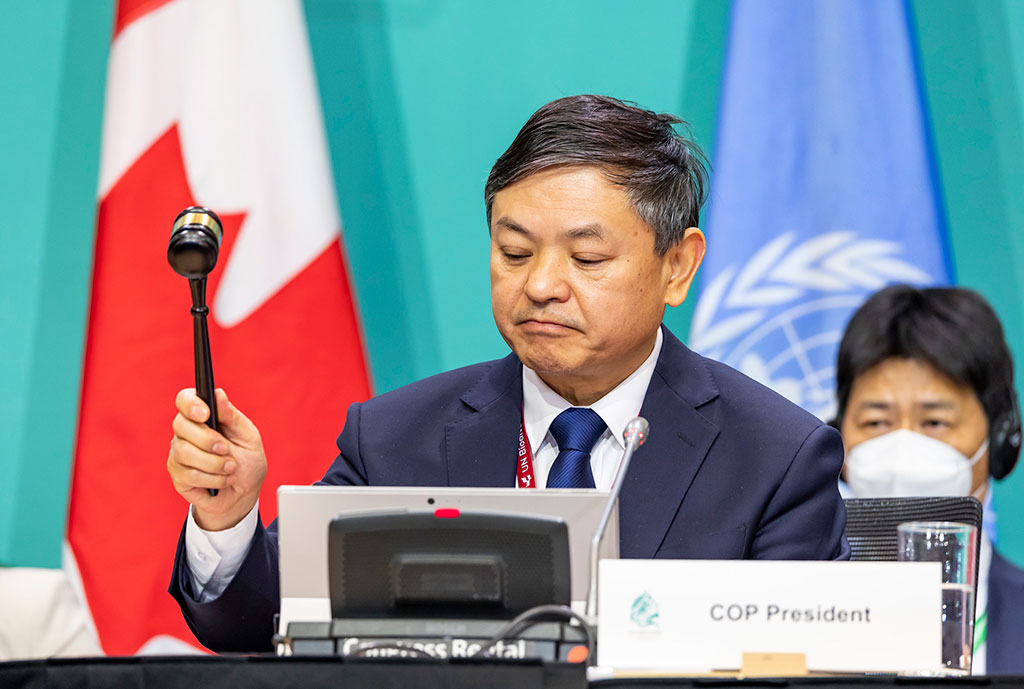
Target 5: “Ensure that the use, harvesting and trade of wild species is sustainable, safe and legal, preventing overexploitation, minimizing impacts on non-target species and ecosystems, and reducing the risk of pathogen spill-over, applying the ecosystem approach, while respecting and protecting customary sustainable use by indigenous peoples and local communities.”
Target 9: “Ensure that the management and use of wild species are sustainable, thereby providing social, economic and environmental benefits for people, especially those in vulnerable situations and those most dependent on biodiversity, including through sustainable biodiversity-based activities, products and services that enhance biodiversity, and protecting and encouraging customary sustainable use by indigenous peoples and local communities.”
Target 16: “Ensure that people are encouraged and enabled to make sustainable consumption choices including by establishing supportive policy, legislative or regulatory frameworks, improving education and access to relevant and accurate information and alternatives, and by 2030, reduce the global footprint of consumption in an equitable manner, including through halving global food waste, significantly reducing overconsumption and substantially reducing waste generation, in order for all people to live well in harmony with Mother Earth.”
SEE ALSO: Doug Chiasson: What does the Fur Institute's new ED bring to the table? Truth About Fur.
***
To learn more about donating to Truth About Fur, click here.

